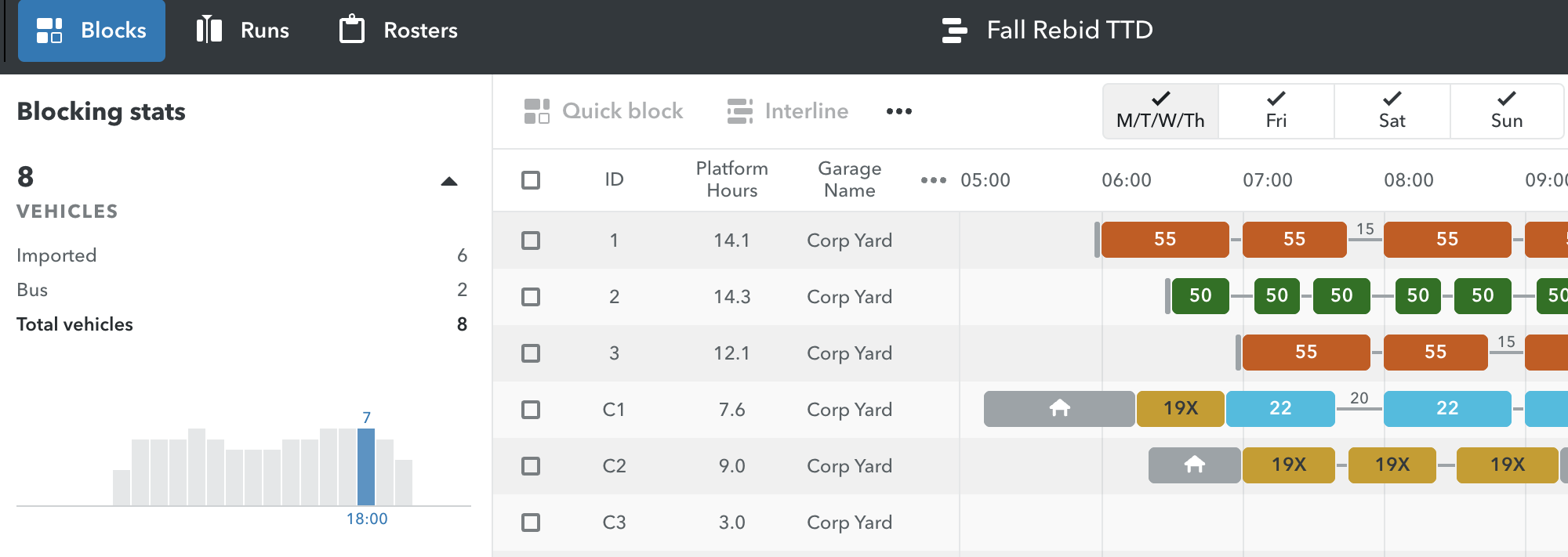At Tahoe Transportation District (TTD), transit planner Tara Frank has always faced some unique challenges. There’s the high seasonal variability, with snow-sport enthusiasts descending on the Lake Tahoe region in winter with very different travel needs than the local population. There’s the patchy cellular service, which makes the agency’s 15 active vehicles difficult to track in real time. And then there’s the artillery guns — yes, guns, used to trigger controlled avalanches, and which naturally lead to traffic delays when fired.
When Tara and her team initially chose Remix Planning and Remix Scheduling, they knew the software would be up to the task of blocking, runcutting, and rostering services about three times per year, for ski season, shoulder season, and summer. But when COVID-19 disrupted typical demand patterns — and subsequent driver shortages disrupted supply — they found themselves adjusting and rescheduling services more frequently, and with different parameters than usual.
 When TTD’s dedicated scheduler left the agency, it fell to Tara to schedule and roster the updated services herself — despite never having done it before. Tara was nervous, both about her new role and the new frequency of scheduling tasks — “Process change can be hard to understand,” she observed — but she and TTD’s new Operations Manager Chris Jacobs jumped into the task.
When TTD’s dedicated scheduler left the agency, it fell to Tara to schedule and roster the updated services herself — despite never having done it before. Tara was nervous, both about her new role and the new frequency of scheduling tasks — “Process change can be hard to understand,” she observed — but she and TTD’s new Operations Manager Chris Jacobs jumped into the task.
They quickly discovered that Remix’s tools were easy to use: Remix Scheduling pulled redrawn or adjusted routes in from the Planning suite, and old runcuts and rosters were saved and available to use as a starting point for new projects. Speed and flexibility proved crucial as Tara’s team embarked on three bids in quick succession, each optimized for a different constraint. “The summer bid was motivated by bus counts — we only had so many buses available” due to maintenance issues, Tara explained. Then there was a winter bid designed to produce rosters that were severable in the event that drivers called out; and then, shortly after, an emergency re-bid that accounted for a permanently-reduced driver workforce.
The time to block, runcut, and roster each new bid? Just about three weeks. As supply and demand conditions continue to change, Tara now feels confident in her team’s ability to respond quickly and, if necessary, re-bid their services quickly. “You’re able to get cross-functional input into the scheduling process without having to start from scratch,” Tara said. “You’re able to iterate within individual bids and from bid to bid.” And all of this helps get the schedule to a place that’s “a little more appealing to drivers” — critical as agencies across the industry adjust to a post-COVID new normal.




%206.png?width=71&height=47&name=The%20Buzz%20Blog%20Hero%20(1750%20x%201200%20px)%206.png)